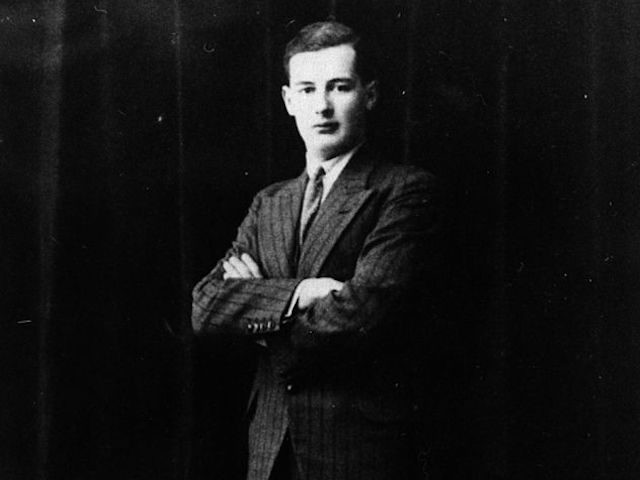As per the end-of-year media ritual, with the last hours of 2016 coming to a close—and with “Auld Lang Syne” playing in the background—we listened to the names of well-known personalities who had left us before the new year arrived.
Hitting hard for some were the deaths, only hours apart, of actresses Carrie Fisher, 60, and her mother, Debbie Reynolds, 83. Joint funerals were held for the two at Hollywood Hills’ Forest Lawn Memorial Park.
Tragically lost in the media’s nostalgic tribute to noteworthy personalities was a name perhaps it considered unworthy of such attention since most Americans—and particularly young people—would not recognize him.
Interestingly, the exact place and time of this person’s demise remains a mystery. What is known is, after undertaking a very courageous effort to save thousands of lives, he disappeared. Vanishing 71 years ago, he was not officially declared dead until 2016.
His name was Raoul Wallenberg—a Swedish envoy living in Budapest, Hungary, during World War II. As the Germans sought to haul Hungarian Jews away for execution, Wallenberg set up shop in that city’s Jewish Quarter to issue them Swedish papers, authorizing them safe travel to his country. It is estimated his efforts saved at least 20,000 lives.
To the dismay of Budapest’s Nazi occupiers, Wallenberg also saved thousands of lives of others for whom he was unable to provide safe passage. He adorned various buildings within the city in Swedish colors—effectively making them “de facto” annexes of Sweden’s diplomatic corps. Jews remaining behind were given safe harbor in these facilities.
However, when Budapest fell to Soviet forces in January 1945, Wallenberg was taken into custody by the Russians, never again to be seen.
Although out of sight, Wallenberg was never far from the minds of his countrymen. A full accounting was sought from the Soviets after World War II. In 1957, Soviet Deputy Foreign Minister Andrei Gromyko, hoping the issue would be dropped, told the Swedes Wallenberg had suffered heart failure in July 1947, while imprisoned at the KGB’s notorious Lubyanka Prison—his remains then cremated. However, the Wallenberg family refused to accept this story.
The Wallenberg case was reopened in 1991 after the Soviet Union collapsed and Hungary began working with Russia. In 2000, Sweden’s former ambassador to Hungary, Jan Lundvik, informed Reuters that Moscow no longer asserted Wallenberg died in Russian captivity but no further evidence was revealed.
While, officially, the Wallenberg case is closed, German historian Susanne Berger continued to work with Swedish and Russian officials to seek closure on behalf of the family. For this purpose, in 2015 she founded the Raoul Wallenberg Research Initiative. The Initiative pulls together the talents of over eighty researchers and organizations to continue investigating the mystery surrounding Wallenberg’s fate.
Berger believes Russian documents hold the key to resolving why Josef Stalin decided to arrest and keep Wallenberg imprisoned. However, as were the deaths Stalin mandated for twenty million of his own countrymen, no reason may ever evolve. Sadly, Wallenberg may well have just been one more life senselessly lost within a gulag run by a Soviet madman.
Apparently, seven decades after Wallenberg’s disappearance, the Russians remain reluctant to provide any further documentation about him. Thus, researchers have been unable to verify he survived much beyond the 1947 Lubyanka citing.
Perhaps plagued by the reality of his death for decades, Wallenberg’s relatives requested in 2015 he officially be declared dead. As Swedish law requires one go missing five years to be so declared and Raoul has met the test almost fourteen-fold since his last known citing, the Swiss tax agency, in November 2015, declared him dead effective July 1952—five years after that citing.
Wallenberg was only 33 years old when he vanished in 1945, perhaps living an additional two more years in the Soviet gulag before dying in July 1947. What a tragic end for a young man who courageously risked his life, saving thousands who then were able to give life to thousands more. He was a person who, in fact, demonstrated one man can make a difference. But, sadly, his contribution to humanity and his unfortunate demise for making it were ignored, for the most part, by a media, deeming such news for 2016 unworthy, even as a footnote to history.
The loss of life, compounded by a double loss such as Fisher and her mother, is truly sad. But mother and daughter enjoyed many more years of life than did Wallenberg who achieved much more for humanity during a much shortened lifespan. It is tragic 2016 has left us without the media honoring him accordingly.
Lt. Colonel James G. Zumwalt, USMC (Ret.), is a retired Marine infantry officer who served in the Vietnam war, the U.S. invasion of Panama and the first Gulf war. He is the author of “Bare Feet, Iron Will–Stories from the Other Side of Vietnam’s Battlefields,” “Living the Juche Lie: North Korea’s Kim Dynasty” and “Doomsday: Iran–The Clock is Ticking.” He frequently writes on foreign policy and defense issues.

COMMENTS
Please let us know if you're having issues with commenting.